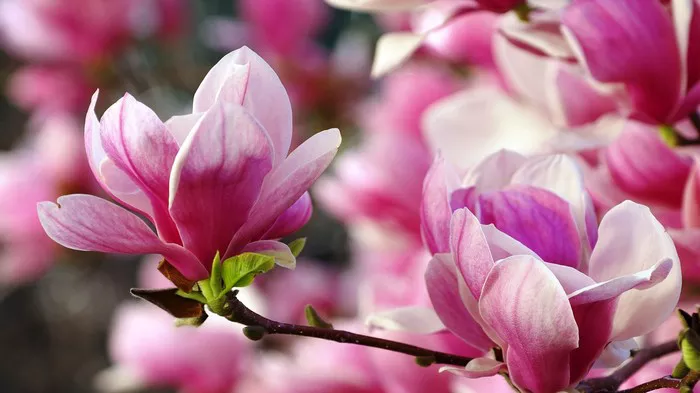Magnolia flowers are renowned for their timeless beauty and captivating fragrance. With their large, showy blooms and elegant appearance, magnolias are often used in floral arrangements, home decor, and even medicinal purposes. However, preserving these delicate flowers can be a challenge. In this comprehensive guide, we will explore the art of drying magnolia flowers, including factors affecting the drying process, various methods for drying, and essential tips to ensure optimal results.
Understanding Magnolia Flowers
Magnolia flowers belong to the genus Magnolia, encompassing over 200 species known for their stunning blooms and ornamental value. These flowers are native to Asia, the Americas, and parts of Africa, with varying colors and shapes depending on the species. Magnolia blossoms typically feature large, waxy petals in shades of white, pink, purple, or yellow, often emitting a sweet, citrus-like fragrance.
Magnolias have cultural significance in many societies, symbolizing purity, beauty, and perseverance. They are commonly used in wedding bouquets, floral arrangements, and traditional medicine. However, their short blooming period and delicate nature make preservation essential for extending their beauty beyond the fleeting season.
Factors Affecting the Drying Effect of Magnolia Flowers
Several factors influence the success of drying magnolia flowers, including:
1. Timing of Harvest: Timing is crucial when harvesting magnolia blooms for drying. Flowers should be picked when they are fully open but not overly mature or beginning to wilt. Early morning is often the best time to harvest when the blooms are at their freshest.
2. Environmental Conditions: Drying magnolia flowers require a controlled environment with low humidity and good air circulation. Excessive moisture in the air can lead to mold or rot, while stagnant air may result in uneven drying.
3. Handling and Preparation: Proper handling and preparation of magnolia blossoms are essential for preserving their shape and color. Gentle handling minimizes bruising or damage to the petals, while removing excess foliage and stem length simplifies the drying process.
4. Drying Method: The chosen drying method significantly impacts the final outcome. Different techniques, such as air-drying, silica gel drying, or pressing, offer varying results in terms of color retention, texture, and longevity.
Methods of Drying Magnolia Flowers
1. Air Drying: Air drying is one of the simplest and most traditional methods for preserving magnolia flowers. To air dry magnolias, gather fresh blooms with intact petals and remove any excess foliage. Tie small bundles of flowers together with string or floral wire and hang them upside down in a dry, well-ventilated area away from direct sunlight. Allow the flowers to air dry for several weeks until they feel crisp to the touch. Once dried, magnolia blooms can be used in arrangements, wreaths, or crafts.
2. Silica Gel Drying: Silica gel drying offers a quicker and more controlled method for preserving magnolia flowers while retaining their color and shape. Begin by preparing a container with a layer of silica gel at the bottom. Trim the stems of magnolia blooms and place them carefully on top of the silica gel, ensuring they are not touching each other. Gently cover the flowers with more silica gel, making sure they are completely submerged. Seal the container and allow the flowers to dry for several days to a week, depending on their size and moisture content. Once dried, carefully brush off any excess silica gel from the petals before using the preserved blooms.
3. Pressing: Pressing is an ideal method for preserving magnolia flowers for decorative purposes or crafting. Start by selecting fresh magnolia blooms with flat, unblemished petals. Place the flowers between layers of absorbent paper, such as parchment or blotting paper, ensuring they are spaced apart to prevent overlapping. Stack heavy books or use a flower press to apply gentle pressure to the blooms. Allow the flowers to press for several weeks, changing the absorbent paper every few days to facilitate drying. Once fully dried, pressed magnolia flowers can be used in various projects, such as card making, scrapbooking, or framed art.
Tips for Drying Magnolia Flowers
1. Choose Fresh Blooms: Select magnolia flowers that are in pristine condition with vibrant colors and firm petals. Avoid flowers that are beginning to wilt or show signs of damage.
2. Handle with Care: Handle magnolia blossoms gently to prevent bruising or tearing of the petals. Use sharp scissors or pruning shears to trim stems and remove excess foliage.
3. Controlled Environment: Create an optimal drying environment with low humidity and good air circulation to prevent mold or rot. Avoid direct sunlight, which can cause fading or discoloration of the flowers.
4. Patience is Key: Allow ample time for magnolia flowers to dry thoroughly, whether using air drying, silica gel, or pressing methods. Rushing the process may result in subpar results or damage to the blooms.
5. Monitor Progress: Regularly check on drying magnolia flowers to ensure they are progressing evenly and without any issues. Adjust drying conditions or methods as needed to achieve the desired outcome.
6. Storage: Once dried, store preserved magnolia flowers in a cool, dry place away from direct sunlight to maintain their color and longevity. Properly stored blooms can last for months or even years, retaining their beauty for future use.
Conclusion
In conclusion, drying magnolia flowers is a rewarding endeavor that allows you to preserve their beauty and fragrance for long-lasting enjoyment. By understanding the factors affecting the drying process and employing suitable methods and techniques, you can successfully preserve magnolia blossoms for various decorative and artistic purposes. With patience, care, and attention to detail, you can create stunning dried magnolia arrangements that capture the timeless allure of these exquisite flowers.


